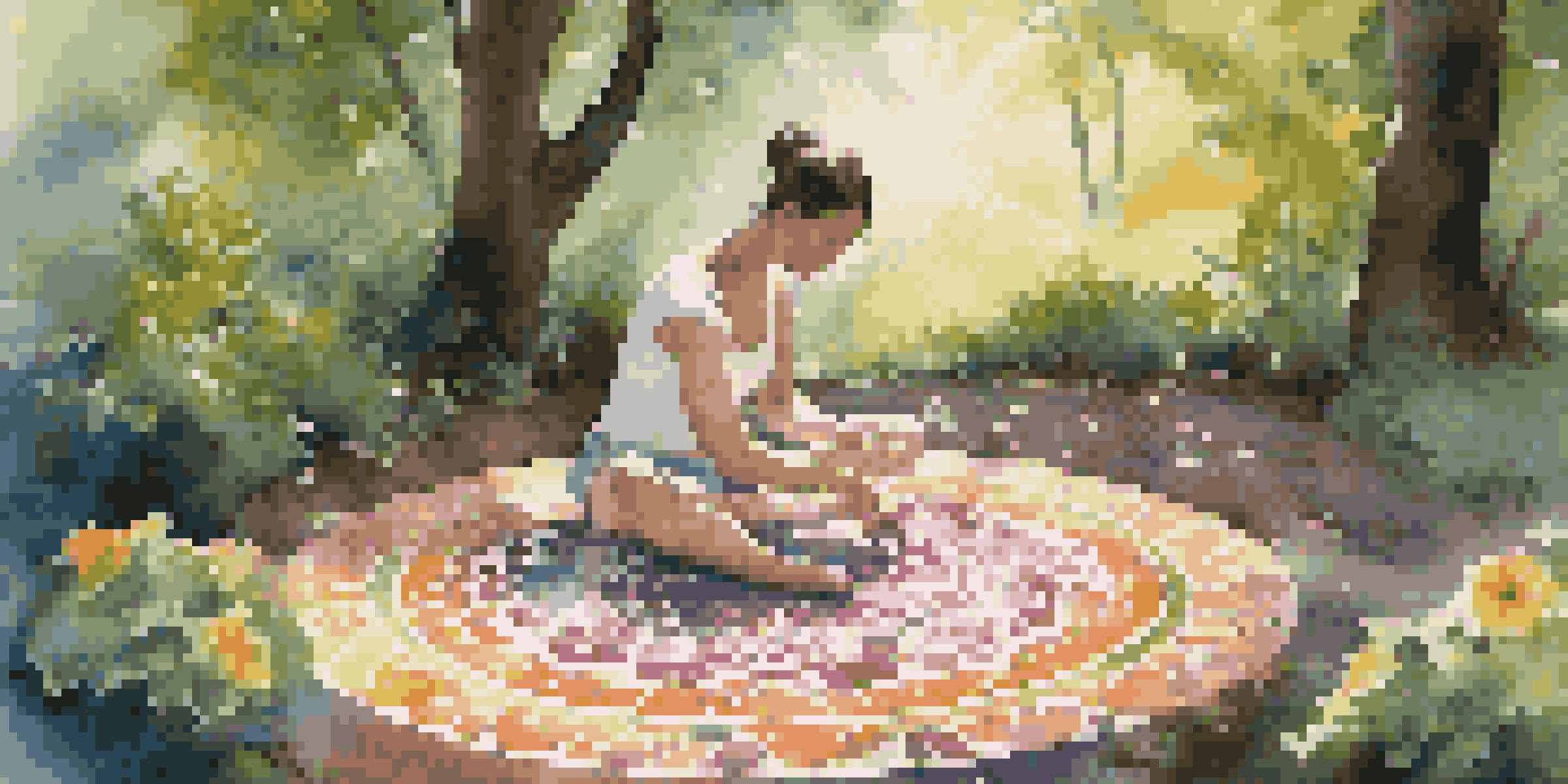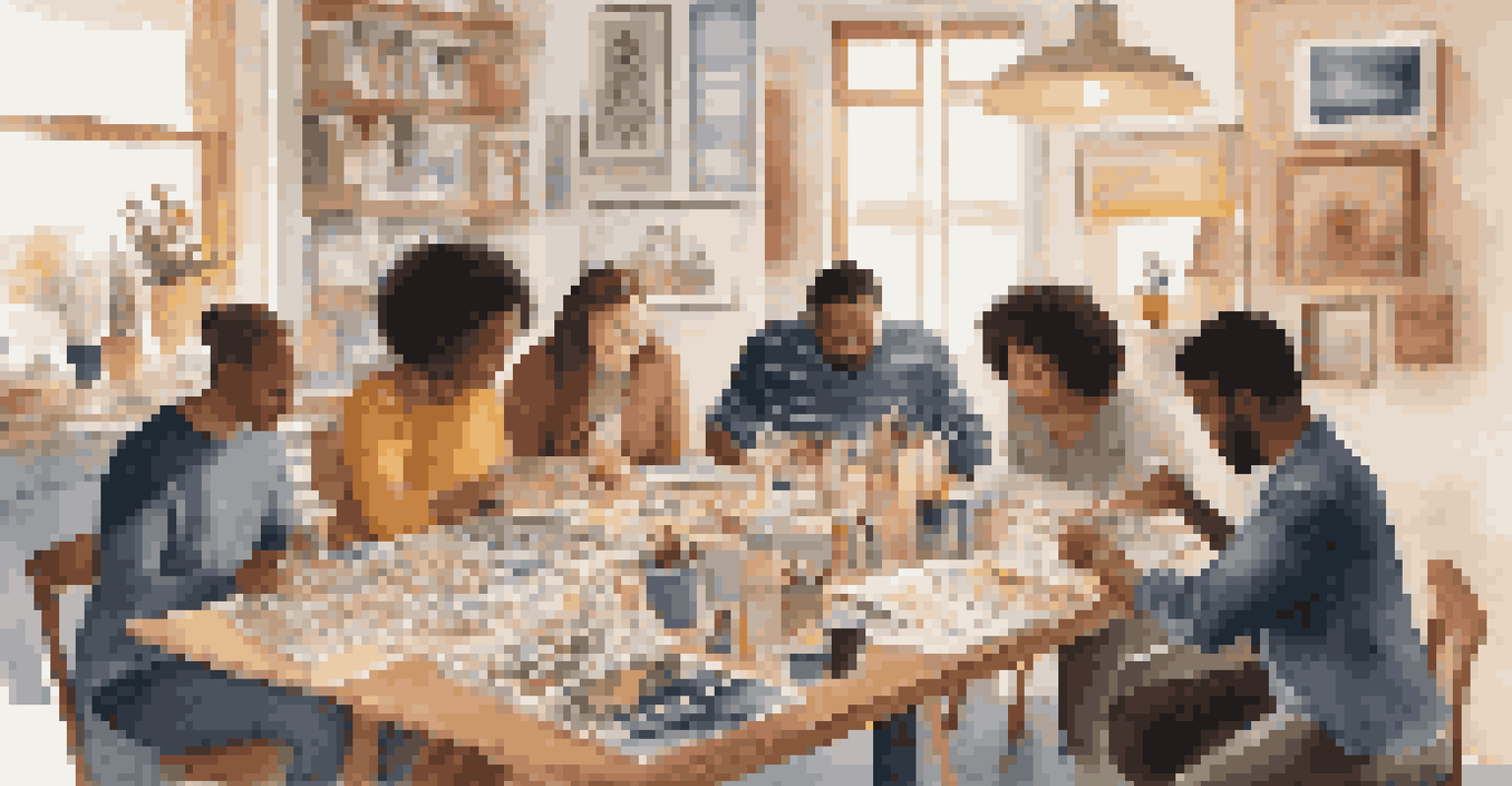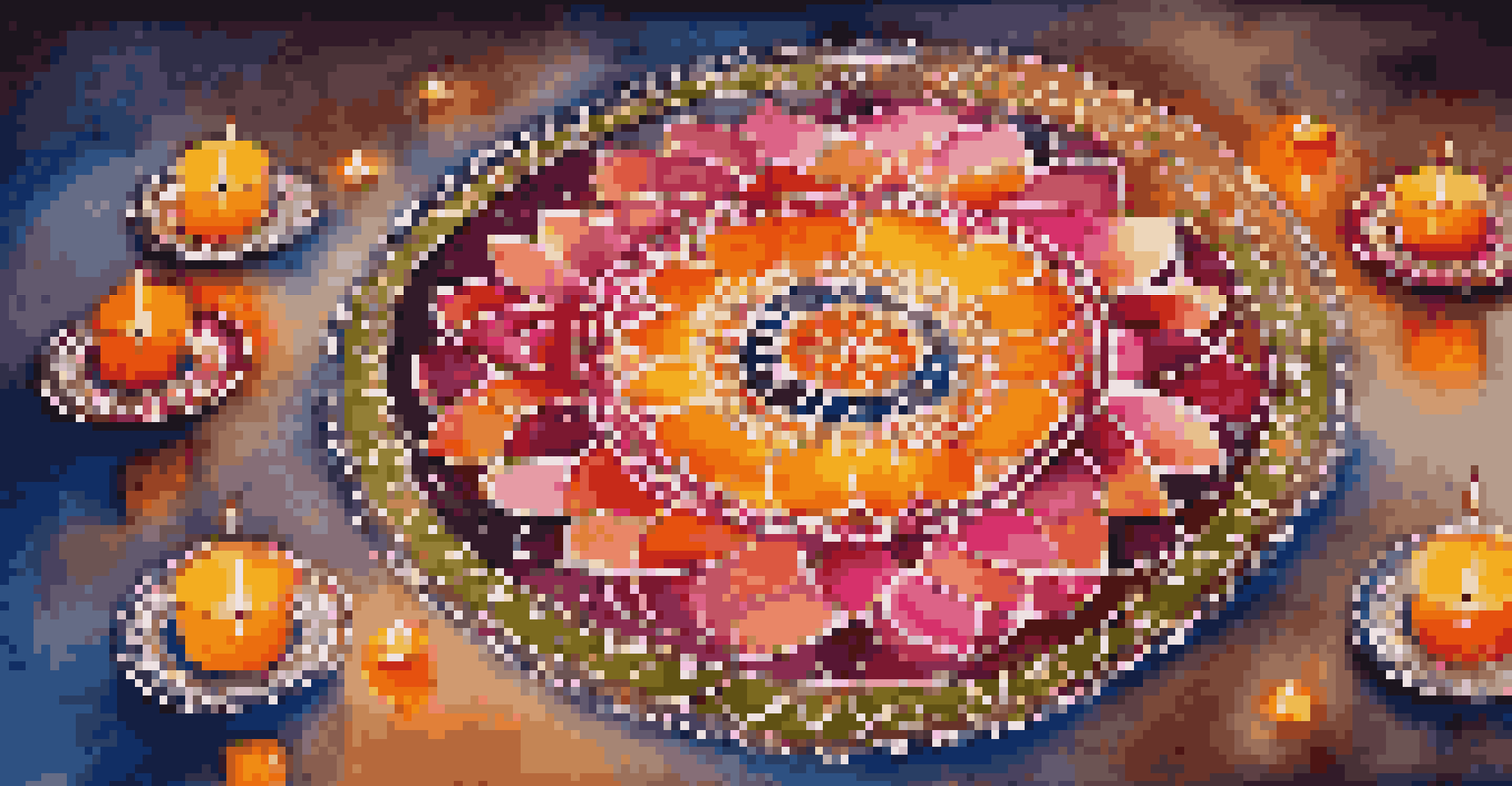The Significance of Ritualistic Art in Spiritual Practices

Understanding Ritualistic Art in Spiritual Contexts
Ritualistic art encompasses a variety of creative expressions that serve specific spiritual purposes. From intricate mandalas to sacred music, these forms of art are deeply woven into the fabric of many cultures' spiritual practices. They often act as a bridge, connecting the tangible world with the spiritual realm.
Art is the most beautiful of all lies; it is a bridge between the tangible and the intangible.
At the heart of ritualistic art is intention. Each brushstroke, note, or crafted symbol is infused with meaning, aiming to elevate the practitioner's spiritual experience. This intention transforms simple art into a powerful tool for meditation, reflection, and connection with the divine.
By participating in these artistic rituals, individuals can find a sense of belonging and identity within their spiritual communities. The shared experience of creating and engaging with ritualistic art fosters deeper connections among practitioners, enhancing the overall spiritual journey.
The Historical Roots of Ritualistic Art
Ritualistic art has a rich history that dates back thousands of years, with roots in ancient civilizations. Cultures such as the Egyptians, Mayans, and Indigenous peoples developed elaborate artistic practices to honor their gods and express their beliefs. These art forms were often integral to ceremonies, serving both aesthetic and functional purposes.

Artifacts from these ancient times reveal how art was used to document spiritual beliefs and practices. For example, cave paintings often depicted hunting scenes intertwined with spiritual significance, illustrating the relationship between survival and the divine. This historical perspective highlights the long-standing significance of art in spiritual rituals.
Art Connects Us Spiritually
Ritualistic art serves as a bridge between the tangible world and the spiritual realm, fostering a sense of belonging among practitioners.
As societies evolved, so did the forms of ritualistic art, adapting to new beliefs and practices. This evolution demonstrates the dynamic nature of spirituality and art, showcasing how they continuously influence and inspire one another throughout history.
The Psychological Impact of Ritualistic Art
Engaging with ritualistic art can have profound psychological benefits. Creating or participating in these artistic practices often leads to a state of mindfulness, allowing individuals to immerse themselves fully in the present moment. This immersion can foster a sense of peace and clarity, even amid life's chaos.
Art enables us to find ourselves and lose ourselves at the same time.
Additionally, ritualistic art provides a safe space for personal expression and emotional release. Whether it's through painting, sculpting, or performing, individuals can channel their feelings into their art, promoting healing and self-discovery. This therapeutic aspect reinforces the idea that art is not just a visual experience but a deeply personal journey.
Moreover, the communal aspect of ritualistic art can further enhance its psychological benefits. Sharing these experiences with others fosters a sense of connection, reducing feelings of isolation and promoting collective healing within spiritual communities.
Ritualistic Art as a Tool for Transformation
Ritualistic art often serves as a catalyst for personal transformation. Through creative expression, individuals can confront their fears, hopes, and desires, leading to profound insights about themselves. This transformative process can empower individuals on their spiritual journeys, helping them navigate challenges with greater resilience.
For example, the practice of creating vision boards, a modern form of ritualistic art, allows individuals to visualize their goals and aspirations. By artistically representing their desires, they are more likely to manifest these intentions in their lives. This illustrates how ritualistic art can be a powerful motivator for change.
Ritual Art Promotes Personal Growth
Engaging in ritualistic art allows individuals to confront their emotions and aspirations, facilitating personal transformation and resilience.
Furthermore, the act of participating in ritualistic art can reinforce positive affirmations and intentions. By regularly engaging in these practices, individuals can cultivate a mindset geared towards growth, healing, and spiritual fulfillment.
Ritualistic Art Across Different Cultures
Ritualistic art manifests in diverse forms across cultures, each with unique practices and meanings. For instance, in Hinduism, intricate Rangoli designs are created to welcome deities into homes during festivals, showcasing the blend of creativity and spirituality. Similarly, Native American sand paintings serve as healing tools during ceremonies, reflecting a deep connection to the earth and spirit.
These cultural variations highlight how ritualistic art is not a one-size-fits-all concept. Instead, it adapts to the values, beliefs, and histories of different communities, enriching the spiritual experiences of practitioners. This diversity invites individuals to explore and appreciate the myriad ways art can enhance spirituality.
Additionally, cross-cultural exchanges have led to the integration of various ritualistic art forms. Individuals today may find inspiration from different traditions, creating a beautiful tapestry of spiritual expression that transcends cultural boundaries.
The Role of Nature in Ritualistic Art
Nature frequently plays a significant role in ritualistic art, providing inspiration and materials for creative practices. Many spiritual traditions emphasize the connection between nature and the divine, leading artists to incorporate natural elements into their work. This connection can deepen the spiritual experience, reminding individuals of their place within the larger ecosystem.
For instance, the use of natural pigments in Indigenous art connects the artist with the land, while the creation of natural mandalas serves as a meditation on the cycles of life. These practices highlight how ritualistic art can foster a sense of reverence for nature, enhancing the spiritual journey.
Cultural Diversity in Ritual Art
Ritualistic art varies across cultures, reflecting unique practices and beliefs that enhance spiritual experiences and foster cross-cultural appreciation.
Moreover, spending time in nature while engaging in artistic practices can amplify the benefits of both. The tranquility of a natural setting can inspire creativity and reflection, allowing individuals to connect with their spirituality in a profound way.
Modern Adaptations of Ritualistic Art
In today's fast-paced world, ritualistic art has found new expressions that resonate with contemporary spiritual seekers. Many people are blending traditional practices with modern techniques, creating unique forms of artistic expression that reflect their personal journeys. This evolution keeps the essence of ritualistic art alive while making it accessible to a broader audience.
For example, digital art and social media platforms have provided new avenues for sharing and experiencing ritualistic art. Artists can create virtual ceremonies or collaborate on projects that reach global audiences, fostering a sense of community and shared spirituality across distances.

These modern adaptations not only preserve the significance of ritualistic art but also invite innovative interpretations. By embracing change and technology, individuals can continue to explore their spirituality in creative and meaningful ways.